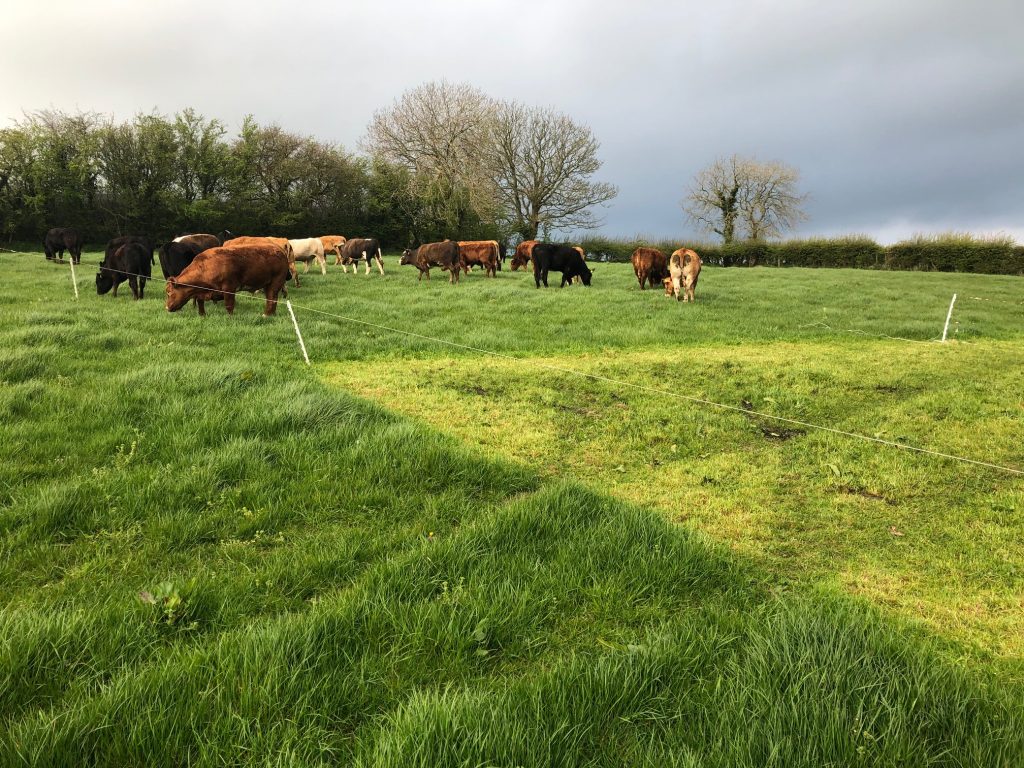Managing Grass in Summer 2020
June 4, 2020
Colin McEvoy, CAFRE Beef and Sheep adviser, Downpatrick, Co Down
Despite a short spell of rain recently, grass growth for this time of the year is being reported as below the 10 year average. This has prompted farmers to think about how best to manage their grass supply.
Optimal grass growth needs; nutrients, water, light and an adequate soil temperature. Little can be done to grow more grass without the water so in this period of rain shortage it is important to best utilise what is growing. (At time of writing this article however some rain is forecast in the coming days). In drier areas where there is variable / reduced grass growth it is beginning to result in a diminishing supply and farmers may be looking at ways to better manage what they have available.
For the beef farmer at this time the main aim is to balance and match grass supply and demand. Firstly this should identify their grass demand, based on the number and types of livestock being grazed. Next grass supply needs to be identified and assessed; this can be done by walking the total grazing area at least once per week and measuring grass covers.
By having a clear picture of these two variables, the farmer can assess if the demand and supply match his needs.

Grazing beef cattle on a paddock system.
A good way of best managing grass supply is to implement a paddock grazing system. Many beef farmers within the Business Development Group programme have been adopting this system over the past few years. The method relies on splitting fields into smaller paddocks and rotating stock between these. Leaving part of the grazing block vacant allows time for recovery and new grass covers to build. If daily grass growth is low, then the length of time between rotations should be increased to replenish supply.
If cover is slow to build and the farmer has surplus silage left over from the previous winter, this could be used to buffer feed. In the summer of 2018, during a particularly dry spell, some farmers used their straw chopper to dispense feed throughout the bare / eaten paddock allowing them to hold animals additional days and lengthen the rotation. This resulted in the other paddocks gaining the prolonged rest period needed.
Rotation can also be lengthened by first grazing the headlands of silage fields already harvested and then bringing this additional ground back into the grazing block.
While aiming to maintain a quality grass supply within the paddocks it is important to make sure that the plant is grazed tightly as under stress it will go to seedhead. Where there is a heavy dew, particularly on second or third rotations, spreading fertiliser ensures that adequate nutrients will be available to grow the grass again once the rain comes.
If grass supply or demand is under pressure the farmer can employ a number of different strategies to ensure efficient utilisation of what is available.
For instance, if there are autumn calvers on the farm still suckling calves, weaning these will reduce grazing demand. If it allows, forward creep graze spring born calves, or if not, introduce meal creep feeding. Consideration could also be given to selling store cattle or unproductive cows identified for culling, putting less demand on the grass available.
In conclusion, for effective grass management, it is important to have a clear picture of your supply and demand, have a good plan in place to ensure it is utilised efficiently and have options to deal with variances such as dry weather.
For further information on grassland management contact your local CAFRE beef & sheep development adviser, or telephone 0300 200 7843 and ask to be directed to a locally based CAFRE adviser.
